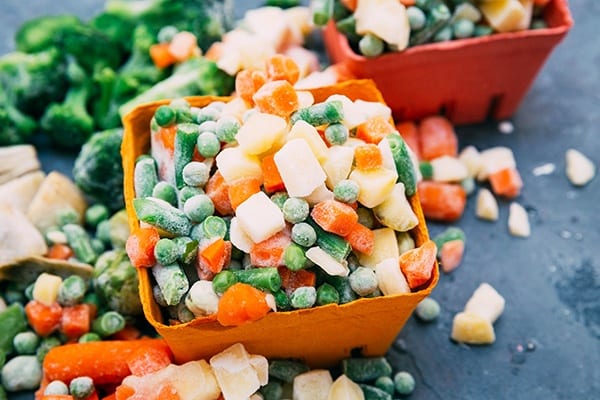Contents
“There is life-giving power in the cold!” – so I would like to start an article on quick freezing.
Freezing is one of the best ways to preserve vitamins. It is thanks to her that we have the opportunity to receive fresh, and most importantly high-quality fruits and vegetables all year round. Freezing fruits, vegetables, berries, mushrooms and herbs provides for long-term preservation of products in a practically unchanged form.
General description of the method
In order for the frozen products to meet all the requirements of GOST, it is necessary to take care of the quality of the raw materials. This implies the importance of ensuring the biological purity of future frosts. All spoiled and damaged plant parts must be removed. All contaminating particles are selected. And the crushed berries should be frozen separately from the whole ones.
Since delicate berries such as raspberries, blackberries and mulberries are prone to sap quickly, they need to be processed first.
In order that, after defrosting, the products do not turn into an incomprehensible mess, but remain attractive not only for the stomach, but also for the eyes, it is necessary that they be quickly frozen. It is this method that allows you to keep the unchanged appearance of the frozen food. As a result of rapid freezing, fruits, vegetables, mushrooms and herbs are exposed to extremely low temperatures, reaching -25 ° C.
Due to such a low temperature, the liquid contained in the fruit freezes so quickly that the ice crystals formed in the cells cannot grow for a long time. Instead, many small crystals form. As a result of such freezing, the appearance of fruits and vegetables is preserved, as well as their high taste and nutritional value.
Currently, there are specialized lines for quick freezing. You can get acquainted with their products in large supermarkets, in the department of semi-finished products. It is here that there is a large selection of fruits and vegetables, ranging from green peas and bell peppers to strawberries, raspberries and black currants.
The requirements for frozen vegetables, fruits and mushrooms are as follows:
- Frozen food must separate well from each other,
- do not have ice, which indicates high humidity during freezing,
- must have a natural shape that matches the specific vegetable or fruit.
The volumes that are capable of freezing industrial freezing lines can range from several tens to thousands of kilograms per hour.
At home, you can use conventional dry-freeze refrigerators. All products, if they have been previously washed, must be dried. To do this, they need to be laid out on a clean, dry towel, somewhere in a draft. After about half an hour, they will be ready to freeze. To do this, you need to put the dried foods in plastic bags with a lock and spread them in a thin layer in the freezer. The thickness of the bag is equal to the thickness of the product unit. After the fruits or vegetables in the bags are frozen, the bags can be stacked on top of each other.
Benefits of fresh frozen food
Eating frozen foods is good for almost everyone. With fresh frozen fruits and vegetables, you can become healthier, stronger and more cheerful during the winter season. Indeed, recent research by scientists has proven a very high degree of vitamin preservation in properly frozen foods.
It is believed that fresh vegetables and fruits in winter contain fewer vitamins than freshly picked and quickly frozen foods.
Dangerous properties of fresh frozen food
The restrictions on the consumption of fresh frozen fruits and vegetables are the same as for freshly picked ones.
It is undesirable to use them fresh for persons with gastrointestinal problems, in particular with dysbiosis.
And it is strictly forbidden to use those who are allergic to this or that fresh fruit or vegetable.










